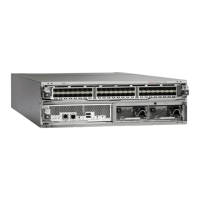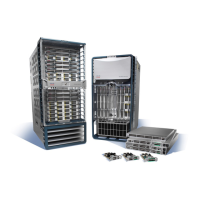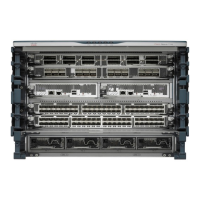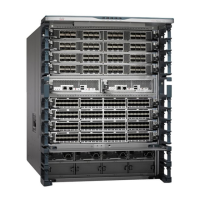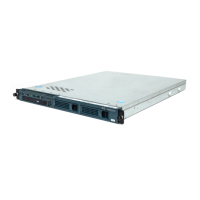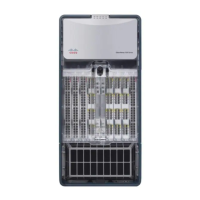Maintenance 5-171
Installing and Configuring Processor Modules
If you set the boot field to any bit pattern other than 0 or 1, the system uses the resulting number to
form a file name for netbooting. To form the file name, the system starts with cisco and links the
octal equivalent of the boot field value (jumper setting) and the processor type in the format
cisco<jumpervalue>-<processorname>. (Table 5-1 lists the default boot file names or actions for
the RP.) The system uses the default filename to invoke the system image from ROM or by
netbooting. However, if the configuration file contains any boot instructions, the system uses those
boot instructions instead of the filename it computed from the jumper settings.
Note The four bits after the boot field (bits 4 through 7) in the configuration register are not used
and must be left cleared (0).
Table 5-1 Default Boot Filenames—Boot Field Jumpers
Bit 8 in the configuration register controls the console Break key. Setting bit 8 to 1 (the factory
default) causes the processor to ignore the console Break key. Clearing bit 8 to 0 causes the processor
to interpret Break as a command to force the system into the bootstrap monitor, thereby suspending
normal operation.
Bit 9 in the configuration register is not used.
Action/Filename Bit 3 Bit 2 Bit 1 Bit 0
bootstrap mode0000
ROM software 0001
cisco2-rp1 0010
cisco3-rp1 0011
cisco4-rp1 0100
cisco5-rp1 0101
cisco6-rp1 0110
cisco7-rp1 0111
cisco10-rp1 1000
cisco11-rp1 1001
cisco12-rp1 1010
cisco13-rp1 1011
cisco14-rp1 1100
cisco15-rp1 1101
cisco16-rp1 1110
cisco17-rp1 1111
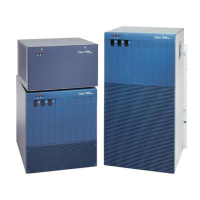
